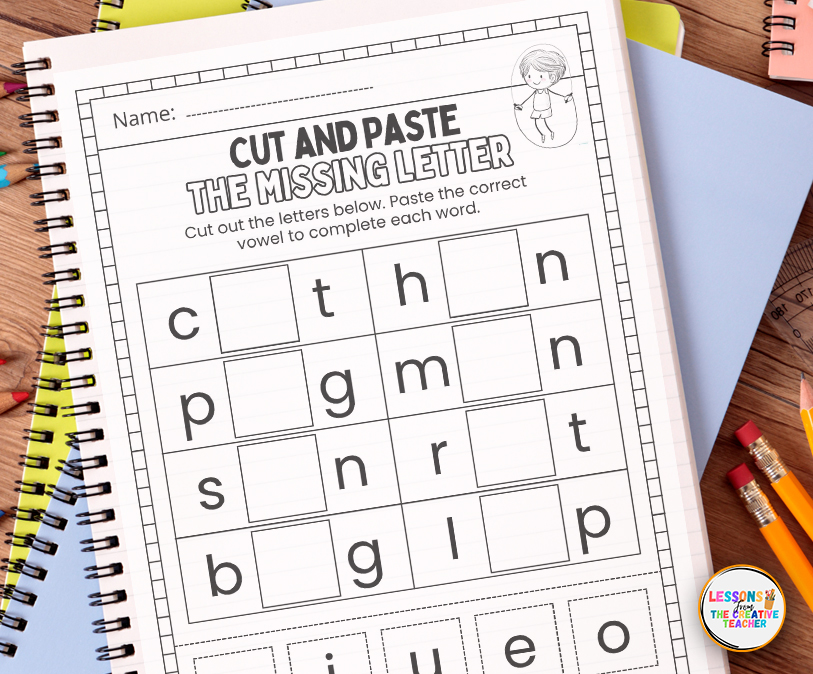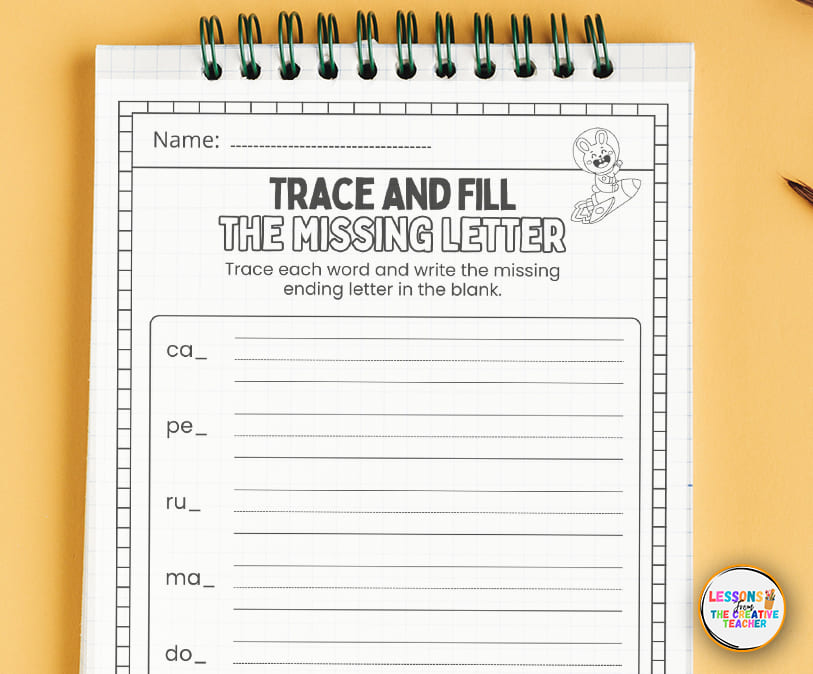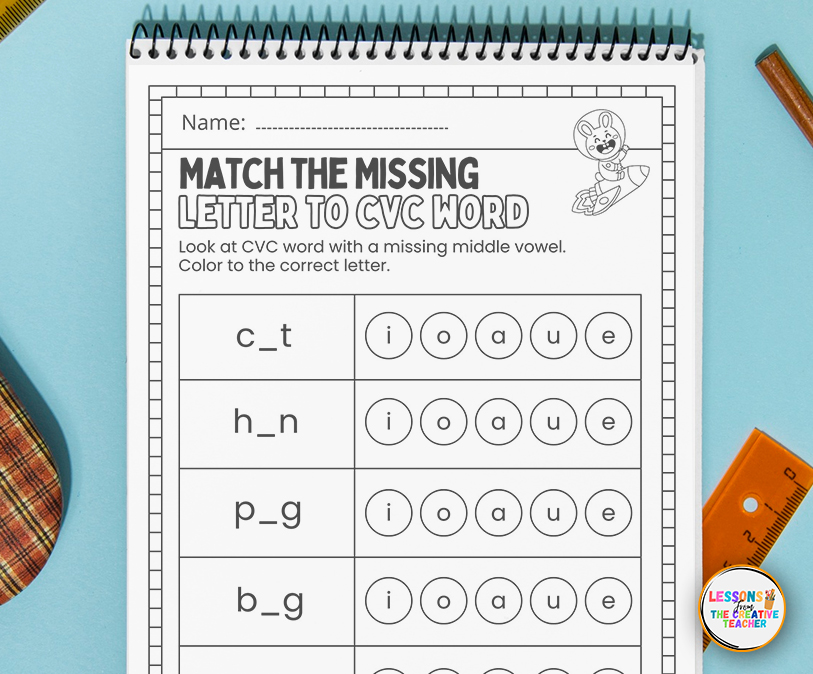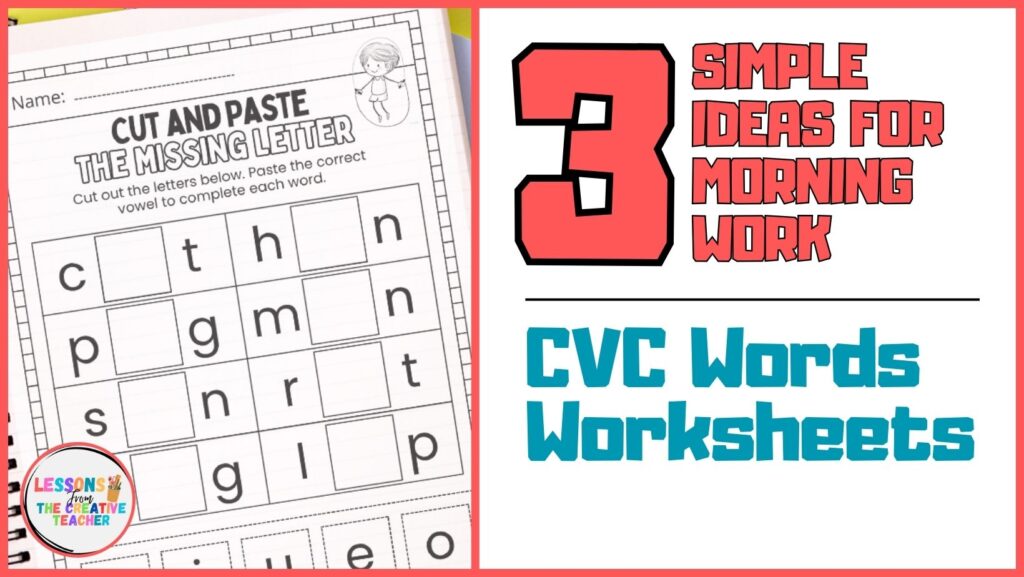Starting the school day with fun, focused activities can set the tone for learning. That’s why CVC words worksheets are such a valuable tool for parents and teachers. These simple, interactive activities give young learners practice with decoding, spelling, and reading, all while keeping morning work stress-free and engaging.
If you’re looking for easy ways to review phonics and build confidence, CVC worksheets are a must-have. In this post, we’ll explore why they matter, three simple ideas you can try right away, and tips to keep them fresh and fun for your students.
Why CVC Words Worksheets Are Important in Early Learning
Building Strong Phonics Foundations
CVC words (consonant-vowel-consonant words like cat, dog, or sun) are the building blocks of reading. When children practice these patterns, they begin to connect letters with sounds, decode words more easily, and develop stronger fluency.
Using cvc words worksheets regularly reinforces these skills:
-
They break down tricky phonics concepts into simple, manageable steps.
-
They give students repeated practice with short vowel sounds.
-
They help learners gain confidence in both reading and spelling.
The more kids practice CVC words, the stronger their foundation for reading longer words and sentences later on.
The Role of Morning Work in Daily Literacy Practice
Morning work is a golden opportunity. Students come in, settle down, and need a calm but productive task. CVC worksheets fit perfectly into this routine because they:
-
Require little to no prep.
-
Can be completed independently.
-
Reinforce essential literacy skills right at the start of the day.
By starting with phonics-focused activities, you set students up for success the rest of the day.
3 Simple CVC Words Worksheets Ideas for Morning Work
1. Cut and Paste the Missing Letter
Kids love activities that involve scissors and glue. A cut and paste CVC worksheet asks students to cut out vowel letters and paste them into words like “c_t” or “d_g.” This turns phonics into a hands-on, tactile experience.

Why it works:
-
Supports fine motor development.
-
Helps with visual recognition of vowels.
-
Makes decoding interactive and fun.
Teachers can use these worksheets as morning work or place them in literacy centers. Parents can also use them at home for homework or practice after school.
2. Trace and Fill the Missing Vowel
Tracing is one of the best ways to combine phonics practice with handwriting skills. These cvc words worksheets ask students to trace words like “sun” or “cat” and fill in the missing vowel.

Why it works:
-
Builds handwriting fluency.
-
Reinforces vowel recognition.
-
Gives learners confidence with spelling patterns.
This type of worksheet is especially helpful at the beginning of the year when students are still strengthening fine motor control. It’s simple, effective, and engaging.
3. Real or Silly Words Sorting Game
Turn phonics practice into a game with a real or silly words worksheet. Students look at words like “bat” (real) and “lat” (silly) and sort them into two groups.

Why it works:
-
Builds decoding skills through careful reading.
-
Encourages vocabulary awareness.
-
Adds an element of fun and laughter to morning work.
Kids love spotting the silly words, and teachers love how this activity reinforces both reading accuracy and word recognition.
Freebie Spotlight: Grab Your Free CVC Worksheets!
Before we go further, I’ve got something exciting for you. If you’re ready to try these ideas in your own classroom, don’t miss my FREE CVC Words Worksheet Pack. Inside, you’ll find cut-and-paste, tracing, and word-sorting activities you can use for morning work, small groups, or homework.
These freebies are teacher-approved, kid-friendly, and ready to print. Perfect for the first week of school or anytime you want to make literacy engaging and stress-free.
How to Use CVC Words Worksheets Effectively
Independent Morning Work Practice
Set the tone each day by placing CVC worksheets on students’ desks as they arrive. They can get started independently, giving you time to handle morning routines like attendance and announcements.
Small Group or Literacy Center Activities
CVC worksheets aren’t just for mornings. Use them in literacy centers or small groups for extra practice. This allows you to give targeted support to students who need it most.
Homework and Extra Support
Parents love simple, clear activities for at-home practice. Sending home cvc words worksheets gives families a way to support learning outside the classroom without overwhelming their child.
Tips to Keep CVC Words Worksheets Fun and Engaging
Add Coloring and Creative Elements
Kids enjoy coloring, so why not combine it with phonics? For example:
-
Color the correct vowel in each word.
-
Color the picture that matches the CVC word.
This makes worksheets feel like play instead of “work.”
Mix Worksheets with Movement or Games
Don’t limit CVC practice to paper. Pair worksheets with games like:
-
Jump to the right vowel mat.
-
Clap out each sound in a word before writing it down.
Movement helps kinesthetic learners stay engaged.
Use Seasonal and Back-to-School Themes
Keep things fresh by tying CVC worksheets to themes. For example:
-
Apples and pencils for back to school.
-
Pumpkins for fall.
-
Snowflakes for winter.
Themed worksheets capture kids’ interest and add excitement to routine practice.
Wrapping Up: CVC Words Worksheets for Morning Success
CVC words worksheets are a simple but powerful way to strengthen phonics skills, build confidence, and keep morning work meaningful. From cut-and-paste vowels to real vs. silly word sorts, these activities turn early literacy practice into fun, hands-on learning.
By using them as morning work, small group practice, or homework, you’ll help your students build strong reading foundations from the very first week of school.
✨ Ready to get started? Try these three simple ideas today and see the difference they make. Don’t forget to grab your FREE CVC Words Worksheet Pack for instant, ready-to-use activities that will make your phonics practice easier and more engaging.
Print them, use them, and watch your students grow into confident readers—one CVC word at a time!



